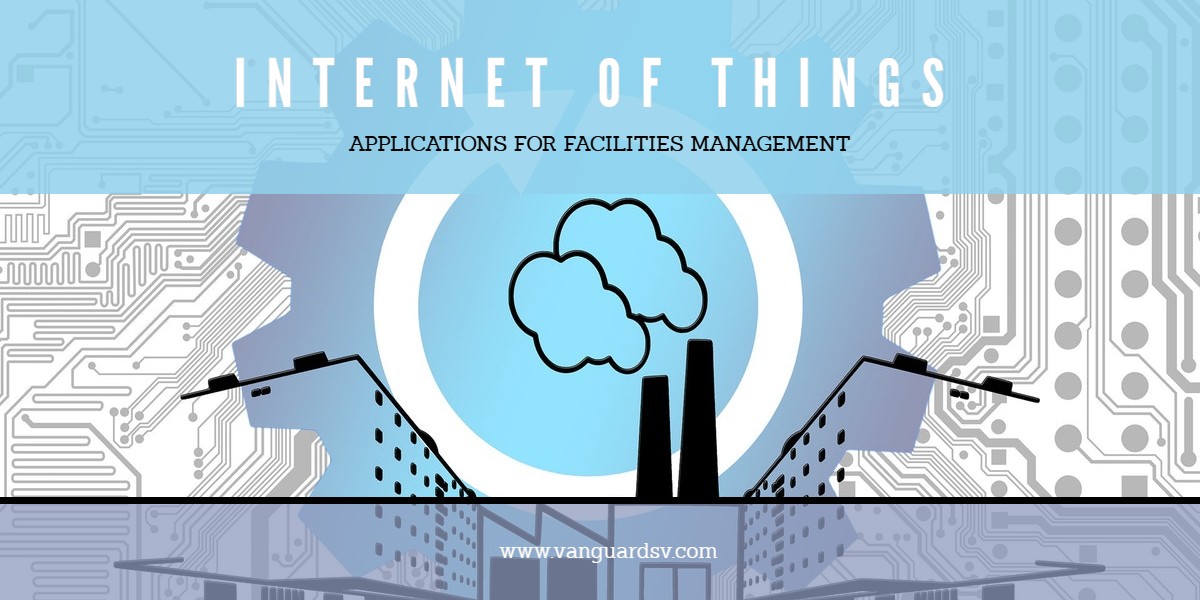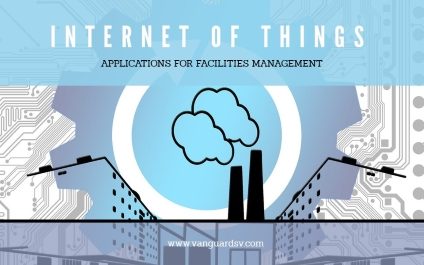Internet of Things (IoT) applications are changing the face of professional janitorial services and how they interact with and manage equipment and assigned spaces.

Janitorial Services and Internet of Things Applications for Facilities Management
As schools and businesses become more reliant upon reliable, up-to-date information to make decisions, facilities managers have turned to connected devices and cloud-based monitoring and reporting technologies to help them cost-effectively stay on top of their departmental responsibilities.
To function efficiently and in line with an organizations directions and goals, outsourced custodial vendors must keep abreast of these technologies as well--allowing for the seamless integration of internal and outsourced services.
According to a recent article by IBM, IoT technology can assist facilities managers with numerous tasks, such as:
- Automating time-consuming tasks.
- Monitoring resource utilization to understand occupant use and improve satisfaction.
- Reduce operational costs by scheduling cleaning services based on need as opposed to schedule-based systems, and;
- Eliminate unnecessary maintenance costs by monitoring system performance and responding to errors, as opposed to wasting valuable human resources to perform routine, mundane checks, or waiting for a device to be reported by a user or maintenance staff as failed.
However, it is the data these connected devices and sensors provide us that is most valuable.
The more ‘things’ that are connected, the more types of data can be collected and analyzed to improve business intelligence.
Companies are able to track thousands of data points from connected cleaning and maintenance equipment in their facilities, and combine data from other IoT-enabled devices, including floor scrubbers, sanitizing dispensers and environmental systems.
This not only helps with trend identification, such as days of the week when traffic increases, but it enables the company to plan its resources more intelligently, according to historical data.
IoT is transforming the commercial cleaning industry
Waste & Recycling
Several technologies have emerged that are revolutionizing the way we look at our garbage.
- RFID Tracking - Allows for bin tracking, specifically drop off and pick up, and provides business intelligence reference points to analyze use.
- Capacity Sensors - Monitors bin capacity and alerts custodial staff to dump trash and change out trash bags. This technology complements more cost-effective, on-demand services, as previously discussed.
- Content Sensors - Content sensors monitor for types of trash being placed in bins and alerts the dumper or maintenance staff that incorrect materials have been thrown into a specific can. This technology is typically used in standard waste containers to inform users and staff that recyclable materials have been placed in the incorrect receptacle, reducing unnecessary waste of recyclable materials, and reducing the costs of waste management and disposal.
For More Information:
Implementing IoT for recycling and waste management has been shown to significantly reduce carbon emissions and associated business expenses.
According to Cisco;
In Barcelona alone, more than $4 billion in savings is expected in the next 10 years, due to the adoption of IoT-aided waste management technology.
In the Netherlands, the Dutch waste management firm Rova puts waste containers online and collects data about how often they’re used and what their waste levels are.
The company then analyzes thousands of datasets from multiple sensors, GPS, smart devices, and RFID tags.
According to the company, the digitized information prevents inefficiencies in the waste management process and has saved 20% in operational costs.
Floor Cleaning
Several connected technologies are emerging in the commercial floor care and carpet cleaning industry, including:
- Robotic Floor Scrubbers & Vacuums - Significantly more advanced than your standard home model. Automated floor cleaning equipment can map and optimize routes, report on resource use, as well as mechanical and electrical problems, significantly reducing costs and labor.
- Floor Sensors - IoT sensors in the floors will allow facilities and custodial staff to identify high-traffic areas, as well as moisture for spills, allowing staff to respond quickly to emergencies and provide on-demand floor care services to the area's that need it most.
According to Corp Magazine, robotic floor scrubbers and vacuums;
[sic]...can be programmed to maintain areas that remain constant in their floor plans.
Alternatively, a machine can be teamed with an operator who, for example, moves tables and chairs first to allow the robot to clean a break room floor, while the operator handles other responsibilities in the room.
The robotic machines are equipped with GPS tracking, sensors, and smart technology to provide information on battery state, location, performance and maintenance issues, operator identity, usage and more.
One manufacturer claims that trials have shown certain cost savings of up to 25 percent.
The Internet of Things and the Big Brother of Clean
Restrooms
IoT technologies for restrooms promise to improve customer satisfaction while reducing costs through on-demand services and automated cleaning and disinfection systems.
Several currently deployed technologies include:
- Automated Cleaning & Disinfection Systems - IoT technologies offer a broad range of self-cleaning and disinfection systems, including faucets that defend against Legionella, soap dispensers that eliminate bacteria, and toilets that disinfect themselves with each flush.
- Dispenser Monitors - Common IoT dispenser monitors include paper towels, soap, and toilet paper, providing a full range of customer service improving business analytics, including peak occupancy and use times and alerts to refill dispensers before supplies are exhausted.
- Occupancy Trackers - In addition to dispenser use tracking; occupancy and use tracking allow a business to understand peak usage hours and schedule on-demand custodial services to complement those times, significantly improving occupant satisfaction and health.
References & Resources
- Internet of Things and the Cleaning Industry – Making the Connection
- Smart Waste Management Systems
- Five Ways IoT Keeps Buildings Cleaner
- Six Ways the Internet of Things Will Change Cleaning
Takeaway
IoT managed devices and monitored automated cleaning systems will soon dominate the janitorial and facilities management market space, offering schools and businesses a wide range of cost-effective solutions to streamline sustainable practices, reduce waste, and improve efficiency and customer satisfaction.
If you would like to learn more about the advantages of outsourced janitorial services and IoT applications for facilities maintenance and management, contact us today for a free quote!
In Bakersfield CA, call (661) 437-3253
In Fresno CA, call (559) 206-1059
In Valencia CA, or Santa Clarita CA, call (661) 437-3253

